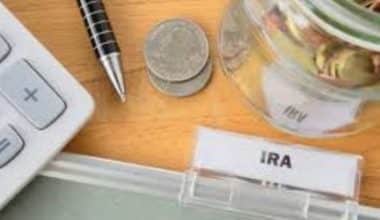Banks charge an average of $34 in overdraft fees. Overdraft fees cost over $450 more per year for frequent overdrafts than for those who are not enrolled in an overdraft protection program.
Let’s look at how overdraft fees operate, how much they cost, and how you may avoid them to save more money and better manage your finances.
What are Overdraft Fees?
Banks will charge you overdraft fees if you withdraw more money from your account than you have in it.
When an account is overdrawn, the bank provides money to meet the overall expense. The consumer is responsible for repaying both the overdrawn amount and the overdraft fee, which can sometimes exceed the original charge.
Overdraft fees can be a considerable and unneeded cost, especially if you have to pay them frequently. However, there are simple steps you may take to avoid them, as well as strategies to negotiate to get them waived if you are charged.
Bank Overdraft Fees
We investigated the four fees connected with overdrafts at 16 of the top retail banks in the United States. The following are the typical fees by the main banks in the United States charge.
| Bank Fee: | Overdraft/NSF | Overdraft Protection | Extended Overdraft |
| Wells Fargo Bank | $35.00 | $12.50 | $0.00 |
| Chase Bank | $34.00 | $10.00 | $15.00 every 5 days |
| Bank of America | $35.00 | $12.00 | $35.00 every 5 days |
| US Bank | $36.00 | $12.50 | $25.00 weekly |
| PNC Bank | $36.00 | $10.00 | $7.00 daily |
| BB&T | $36.00 | $12.50 | $8.00 daily |
| Regions Bank | $36.00 | $15.00 | $0.00 |
| SunTrust Bank | $36.00 | $12.50 | $36.00 every 5 days |
| The Huntington National Bank | $37.50 | $0.00 | $25.00 every 5 days |
| TD Bank | $35.00 | $10.00 | $20.00 every 10 days |
| Fifth Third Bank | $37.00 | $12.00 | $0.00 |
| KeyBank | $34.00 | $10.00 | $28.50 every 5 days |
Types of Overdraft Fees
While most banks charge similar amounts for each fee, the way each fee works and when it is charged may change slightly. The various fees associated with an overdraft are among the highest checking account fees charged by banks. Besides the usual overdraft fee, you may meet the non-sufficient funds (NSF) fee, the overdraft protection fee, and the extended overdraft fee.
#1. Overdraft Fee
The most noticeable fee associated with an overdraft is the overdraft fee, which occurs whenever the bank accepts a transaction that exceeds your available amount. When you overdraw by less than $5, most banks do not charge an overdraft fee.
Every bank and credit union has a daily restriction on the number of overdraft fees it will impose. Banks typically impose a maximum of 4 to 6 overdraft fees per day per account, while a few outliers allow up to 12 in a single day.
#2. NSF fee
The nonsufficient funds (NSF) fee is charged if your bank chooses to reject a transaction that exceeds your balance. Almost every bank charges the same amount for overdraft and NSF fees, and the two are sometimes displayed as one figure in your fee schedule.
Because a bank must choose between accepting and refusing an overdraft, a single overdraft will cost you either an overdraft fee or an NSF fee, but never both. When calculating the daily maximum, a few banks differentiate between the two fees. For example, U.S. Bank will only charge up to four overdraft fees per day but counts the limit on NSF fees individually, so you may end up paying eight distinct penalties in a single day.
#3. Overdraft Protection Fee
The overdraft protection fee, also known as the overdraft transfer fee, is charged every time the bank organizes a transfer from another of your accounts, usually a savings account, to pay the overdraft. Banks are not permitted by law to provide overdraft protection as automatic account service, thus clients must opt in to use the option.
Overdraft insurance is frequently provided for free by online banks, but if you use a traditional bank, you should expect to pay anything from $10 to $12.50 for every transfer. While this may save you money over incurring overdraft or NSF fees, if the bank’s policy does not contain mandatory alerts for each overdraft transfer, you may end up depleting your savings before you realize it.
#4. Extended Overdraft Fee
The extended overdraft fee is the final fee in the arsenal of overdraft penalties. This fee, also known as a persistent overdraft or extended overdrawn balance fee, applies when you leave your account balance negative for a specified period of days. In most circumstances, you have 5 business days or 7 calendar days to correct your balance before the extended overdraft fee depletes your account even further.
Some banks charge this fee every 5 days, while others charge it every day until you raise your balance back over zero. The quantity of extended overdraft fees that you can incur varies per bank.
Example of an Overdraft Fee
If you have an automatic overdraft service with your bank, the bank may cover the amount and you will still be reimbursed. Your account balance will fall below zero, resulting in a negative balance that represents the amount you now owe the bank.
Assume you have $50 in your account but need $75 to cover an unexpected bill, such as a car repair. You’re $25 short, but the bank lends you the money, and the payment goes through. Assume your bank charges a $30 overdraft fee. That $30 fee, plus the $25 overdraft fee, would result in a -$55 account balance.
How to Avoid Overdraft Fees
Overdraft fees are easy to avoid if you follow a few simple steps.
#1. Disable automatic overdrafts.
While overdraft fees are intended to assist you to avoid humiliating and inconvenient unpaid bills, you are not required to use the program. When you open a new account, part of the paperwork you fill out asks if you want to use this service.
If you choose not to have overdraft protection, your bank will not cover you if you overdraw your account and will return any payments you are unable to make as unpaid — but you will not be charged the overdraft fee.
#2. Make use of an account that does not charge you.
Capital One, Ally Bank, and Alliant Credit Union are among the financial organizations that have discontinued collecting overdraft fees on their accounts. You can always switch to a new bank to save even more money in the long term.
#3. Register for bank alerts.
Setting up an alert to tell you when your account balance falls below a specific amount is a simple approach to help yourself avoid unexpected overdrafts and save on fees.
For example, you could set up automated notifications whenever your account balance falls below $250; that way, you’ll know to avoid spending more than that amount until you’ve deposited new funds into the account.
#4. Overdraft protection
Overdraft protection and automatic overdrafts may sound similar, but they are not the same thing. With automatic overdrafts, your bank covers any overdraft on your behalf by automatically lending you the money and making the payment. Overdraft protection allows the bank to move funds from another connected account to cover an overdraft.
It is important to note that the linked account must be with the same institution. Some banks will still charge a fee for using overdraft protection.
#5. Maintain a buffer balance
Keep a little extra money in your account to cover any overlooked or unexpected costs.
“One common mistake consumers make in this area is failing to consider recurring transactions such as subscriptions or automated monthly payments,” explains debt expert Jackie Beck. “Keeping a buffer in your checking account above and beyond what you regularly spend each month is one approach to avoid overdraft fees.”
How to Persuade Banks to Waive Overdraft Fees
If you are assessed an overdraft fee, you are not necessarily obligated to pay it. It doesn’t hurt to try to negotiate a fee reimbursement. Here are a few actions you can take.
#1. Contact the bank.
There’s no guarantee that will work, but you may always call the bank and respectfully request that the charge be removed from your account.
“If it’s your first infraction,” says Chris Abrams, founder of Abrams Insurance Solutions, “your bank will frequently work with you.”
Your chances of succeeding improve if you overdraw your account infrequently, remain polite and are otherwise a good bank customer. But don’t anticipate a simple yes. Prepare an explanation for why the bank should waive the fee for you.
#2. Consider using an app.
You can also utilize an app to assist you to negotiate overdraft fee reimbursements. Cushion, for example, monitors your bank accounts automatically and negotiates with the bank to obtain a refund if you are charged an overdraft fee. Just keep in mind that this procedure can take up to 90 days.
Overdraft Fees: Do They Affect Your Credit?
Overdraft fees have no direct impact on your credit or credit score. This is due to the fact that banking history is not disclosed to the three credit bureaus—Experian, TransUnion, and Equifax. However, if you fail to pay a negative balance on your bank account and the account is turned over to a collection agency, the collection account may appear on your credit report and harm your credit score.
Overdrafts on checking accounts can appear on your ChexSystems report, which banks and credit unions use to examine your banking history. When choosing whether to approve you for a bank account, financial organizations generally consult your ChexSystems report.
Negative records on this report, such as unpaid overdrafts, may make it more difficult to create a new bank account, which is why it’s critical to keep your account balances above zero.
You can get one free ChexSystems report every year to check your banking history. If you find outstanding account balances, strive to settle them as quickly as feasible. After that, you can request that the financial institution erase the record from your ChexSystems report. However, removal is ultimately their decision.
Is Overdraft a Loan?
When a customer’s bank account reaches zero, the bank may offer the consumer a loan known as an overdraft that enables them to continue paying their bills and other costs. In the event that the customer has an unanticipated charge or an insufficient balance in their account, the bank will offer to lend them money for a fee.
Is an Overdraft Fee Charged Daily?
Your account will be even further in the red when the extended overdraft fee is applied, but you have either 5 business days or 7 calendar days to rectify your balance before the fee is applied. There are certain financial institutions that impose this cost once every 5 days, while others will continue to do so daily until the balance in your account is brought back up above zero.
How Do I Get Rid of Overdraft Fees?
After you have contacted customer care and explained your position, an overdraft fee may be refunded by some banks. This is especially true if you have been a loyal customer to the bank and rarely go over your account’s limit. There is a possibility that some other banks offer a structured program that either completely waives your overdraft fees or assists you in avoiding them.
What Causes Overdraft Fees?
Once you do not have sufficient money in your account to make a payment that you’ve made, and thus the bank settles the difference for you as a way of an overdraft protection service, you will be billed an overdraft fee. Overdraft fees average roughly $34 for banks.
Who Pays Overdraft Fees?
Along the same lines as the routine account maintenance fees, this fee will be deducted from your checking account in an automated fashion by your financial institution. An overdraft fee is not automatically assessed for every overcharge that occurs. There are a lot of financial institutions that won’t charge you if your account is only $5 or so short.
What Is the Maximum Amount a Bank Can Charge in Overdraft Fees?
There is no upper limit placed on the amount of money that a bank is allowed to charge a customer for an overdraft fee under federal law. The bank is the one that decides these matters. When opening a deposit account, financial institutions are obligated to inform customers of all applicable costs, and they must also provide advance notice if they plan to raise any fees in the future.
Are Fees Charged for Every Overdraft I Make?
Depending on the practices of your financial institution, you can be required to pay a fee for each and every overdraft that you incur. When an overdraft occurs, banks have the option to cover the cost of subscriber overdrafts which originate from checks, debit card transactions, automatic bill payments, or any other recurring operations as part of their regular overdraft processes without requiring your approval. However, they may also decide to impose a charge for the courtesy of covering those costs.
Overdraft Fees FAQs
What happens if you have an overdraft fee?
If you do not raise your balance over zero, the bank may cancel your account and send any outstanding sum to a collection agency. Banks may also provide overdraft protection in the form of an automatic transfer from a linked account to pay a purchase if you do not have enough money in checking.
Does overdraft affect credit score?
Absolutely. Using an unarranged overdraft on a regular basis might harm your credit rating since it shows potential lenders that you struggle to manage your expenses. Read our guide to improving your credit rating if you have utilized an unauthorized overdraft.
Can overdraft fees be refunded?
Some banks will refund an overdraft fee if you contact customer care and explain your position, especially if you are a loyal customer who rarely overdraws your account. Other banks may avoid a formal program that waives or assists you in avoiding overdraft fees.
- WHAT IS NSF FEE? Overview and Comprehensive Guide
- OVERDRAFT PROTECTION: Definition & How Does It Work
- Personal Loans vs. Other Lending Options
- Financial Capital: Overview, Sources, Examples, Types (+free tips)
- NSF Fee: Overview, Examples & 5 Tips to Avoid them






